
The year is 10,181. The Imperium has stood for 10,000 years under the rule of House Corrino, currently headed by Padishah Emperor Shaddam IV. Balanced against him are the Landsraad, the alliance of Houses Great and Minor, whose feudal seats are granted by the Imperial house, and a combination of the Spacing Guild and CHOAM. CHOAM—or Combine Honnette Ober Advancer Mercantiles—controls all trade and contracts across the Imperium, including that of Spice. The spice melange is harvested on only one world—the desert planet of Arrakis—and bestows longevity, enhanced awareness, and prescience. Although highly addictive, it has one other property. It enables the mutated Guild Navigators to safely navigate interstellar space and thus the Spacing Guild to maintain its monopoly on all space travel between systems, for the Imperium bans the construction of thinking machines and has done so for millennia, ever since the Butlerian Jihad. Yet beneath this façade of stability, the Houses Great and Minor jockey and feud for power, such as the centuries old rivalry between House Atreides and House Harkonnen, the Great Convention preventing such feuds from breaking out into open warfare, but allowing economic wars and wars of assassins. Emperor Shaddam IV sits over it all, ready to unleash his dreaded Imperial Sardaukar, shock troops raised and trained in the harshest of environments, should the conventions be broken, a House gain too much power, or too strong a voice in the Landsraad. Four Great Schools provide services to the Emperor and all of the Houses. The Sisterhood of the Bene Gesserit provide wives, counsellors, and concubines; the Order of Mentats, strategists, spymasters, consellors, and advisors capable of computer like calculations; the Suk School incorruptible and unbreakable physicians; and the Swordmasters of Ginaz, commanders, generals, security officers, and bodyguards, trained in the use of swords and other weapons capable of piercing the personal energy shields worn as protection.
This is the setting for
Dune – Adventures in the Imperium: The Roleplaying Game, published by Modiphius Entertainment and based on both the recent film and the fictional universe and novels originally created by Frank Herbert. Using the publisher’s house rules of the
2d20 System, it enables players to take the reins of a House in the Landsraad, and as its heirs and advisors, direct it fortunes in the quietly turbulent politics of the Imperium. Perhaps they will negotiate new contracts, gain the right to harvest spice from Arrakis, form an alliance with another house, or feud with a rival house. All of these are possible in a rules system which allows the players to play at two levels—‘Architect’ when they will direct the fortunes of their house and ‘Agent’, the personal level of the Player Character. Of course,
Dune – Adventures in the Imperium is not the first roleplaying game to be set within Frank Herbert’s creation,
Dune: Chronicles of the Imperium having been designed by Last Unicorn Games and published by Wizards of the Coast in 2000, but it does have the advantage of already being better supported.
Dune – Adventures in the Imperium: Agents of Dune provided a campaign starter that offered a different beginning than might be expected in the setting, and it should be noted that by being set over a century before the start of the first novel,
Dune, there is a greater flexibility in what is possible in
Dune – Adventures in the Imperium: The Roleplaying Game.
Dune – Adventures in the Imperium begins with an introduction to the setting of the Known Universe that takes up a quarter of the book. Its primary focus is on the situation in the year 10,181, but also explains how that came about using the history and background drawn from the expanded series of novels by Brian Herbert and Kevin J. Anderson. Potentially, this history offers scope to play in different time periods, although that is not the focus of core rulebook, and in addition, the history does not push beyond the year 10,181 and the events portrayed in either
Dune or its film adaptations. As well as a timeline, the background covers the major factions and balance of powers, the schools, and more. There is a degree of repetition here as the book looks at each in more depth, but this a very solid overview which will be appreciated by fans of both the novels and the films, as well as helping to cement the setting for anyone coming to
Dune – Adventures in the Imperium: The Roleplaying Game after watching just the films.
Playing and running
Dune – Adventures in the Imperium: The Roleplaying Gamereally begins with the creation of a House, the noble family with feudal holdings around which much of the roleplaying game’s play will be directed. The choice of Nascent House, House Minor, House Major, or Great House will determine much of the framework. It will determine how many Domains, areas of interest the House will have, how many enemies, and mechanically, how much Threat (used to create problems and difficulties for the House and the Player Characters) the Game Master will have at the start of each session Apart from the enemies, who can be created on the given table, all of this is down to player choice.
House Hauteville is a renowned for its skilled military and its tacticians based on the world of Menerth III. It is also known for its diary products made on the vast upland pastures it owns, and had to protect in the past, hence its development of its military prowess. This includes its former vassal, House Indermauer, whose founders originally trained with House Hauteville, and has continued offer rival services to this day.
House Hauteville
House Minor
Primary Domain: Military
Secondary Domain: Farming
Banner: A red cow on a green background
House Trait: Stalwart (Military)
Enemy: House Indermauer (Rival)
When it comes to Player Character creation, a player decides the role that his character will take in the house. This can include the heirs, councillors and advisors, swordmasters, warmasters, and more. A player will have a main character and possibly supporting characters too. A Player Character in
Dune – Adventures in the Imperium is defined by Skills, Focuses, Drives, Traits, Complications, and Assets. The five Skills are Battle, Communicate, Discipline, Move, and Understand, whilst the five Drives are Duty, Faith, Justice, Power, and Truth—both of which are rated between four and eight. Focuses represent skill specialisations, such as Deductive Reasoning for Understand or Dirty Fighting for Battle. Traits can be Talents, which make a test possible or make it harder or easier depending upon its nature. So the Bene Gesserit Talent of Hyperawareness grants a Bene Gesserit Sister the ability to ask two questions rather than one when spending Momentum to Obtain Information, whereas the Bold Talent can be selected by anyone and when used with the Battle skill, the player can additional twenty-sided dice by generating Threat for the Game Master to use, the player can reroll one of the dice in the pool. Assets include equipment, contacts, and so on, for example, a personal shield or someone in a criminal gang on Arrakis.
Although character creation can be done in play, and that process is fully detailed too, the standard process involves selecting an Archetype, which sets the base skills, assigns four focuses to the skills, three Talents, assigns the values and statements to his character’s Drives, chooses three assets which the Player Character will always have access to, and then finally, a Trait, Ambition, and any personal details. Faction templates are also available if a player wants his character to be a Bene Gesserit Sister, Fremen, Mentat, Spacing Guild Agent, or a Suk Doctor, but these are optional and a player is free to pick and choose as he likes.
The sample character is a Mentat, sponsored by the Spacing Guild to work with House Hauteville in ensuring that the house’s goods and services find markets.
Name: Benedikt Winter
Faction Template: Spacing Guild Agent
Archetype: Analyst
Ambition: To ensure the economic prosperity of my house
Skills
Battle 4 Communicate 5 (Bartering) Discipline 8 (Composure) Move 4 Understand 7 (Attention to Detail, CHOAM Bureaucracy)
Drives
Duty 8 (I serve at the pleasure the House) Faith 4 Justice 5 Power 6 (Power must be used wisely and cleverly) Truth 7 (You will know me by my deeds)
Traits: Analyst, Guild Agent
Talents: Calculated Prediction, Guildsman, Intense Study
Assets: Sapho Juice, Ixian Dampner
Dune – Adventures in the Imperium employs the
2d20 System first used in the publisher’s
Mutant Chronicles: Techno Fantasy Roleplaying Game and
Robert E. Howard’s Conan: Adventures in an Age Undreamed Of, and since developed into the publisher’s house system. To undertake an action, a character’s player rolls two twenty-sided dice, aiming to have both roll under the total of a Skill and a Drive. Each roll under this total counts as a Success, an average task requiring two successes. Rolls of one count as two Successes and if a character has an appropriate Focus, rolls under the value of the Skill also count as two Successes.
In the main, because a typical difficulty will only be a Target Number of one, players will find themselves rolling excess Successes which becomes Momentum. This is a resource shared between all of the players which can be spent to create an Opportunity and so add more dice to a roll—typically needed because more than two successes are required to succeed, to create an advantage in a situation or remove a complication, create a problem for the opposition, and to obtain information. It is a finite ever-decreasing resource, so the players need to roll well and keep generating it, especially if they want to save for the big scene or climatic battle in an adventure.
Now where the players generate Momentum to spend on their characters, the Game Master has Threat which can be spent on similar things for the NPCs as well as to trigger their special abilities. She begins each session with a pool of Threat—equal to the number of players if their characters’ House is a Minor one, but can gain more through various circumstances. These include a player purchasing extra dice to roll on a test, a player rolling a natural twenty and so adding two Threat (instead of the usual Complication), the situation itself being threatening, or NPCs rolling well and generating Momentum and so adding that to Threat pool. In return, the Game Master can spend it on minor inconveniences, complications, and serious complications to inflict upon the player characters, as well as triggering NPC special abilities, having NPCs seize the initiative, and bringing the environment dramatically into play.
Combat uses the same mechanics, but offers more options in terms of what Momentum can be spent on. This includes creating a Trait or an Asset, or taking advantage of one in the situation, either of which can then be brought into the combat, and keeping the initiative—initiative works by alternating between the player characters and the NPCs and keeping it allows two player characters to act before an NPC does. It takes in various forms, scaling up from duelling and skirmishes to espionage and warfare, taking in intrigue along the way. These are supported by descriptions of the various assets which the Player Characters can bring into any one of these conflict types. Where
Dune – Adventures in the Imperium differs from other
2d20 System roleplaying games is the lack of Challenge dice, and instead of inflicting damage directly via the loss of Hit Points, combatants are trying to defeat each through the removal of Assets and attempting to create—cumulatively—Successes equal to or greater than the Quality of the task or the opponent. Minor NPCs or situations are easily overcome, but difficult situations and major NPCs will be more challenging to defeat and will require extended tests.
In addition, a Player Character has access to Determination, typically a point at the start of an adventure. Determination is used in conjunction with a Player Character’s Drives and their associated statements, and when spent, a point of Determination can be used to set a die automatically to one, to reroll dice, create a new trait, or take an extra action. However, if the action is at odds with the statement attached to a Drive, then the Game Master can force the Player Character to comply or challenge the Drive and its statement. Compliance means that the Player Character suffers a Complication, unable to overcome the Drive, but Challenge means the Player Character can act freely, but leads to the loss and use of the statement, at least temporarily. It can be recovered, but with some difficulty. Either way, the Player Character gains a point of Determination.
What Determination highlights here is the degree of nuance in the combination of Skills and Drives for each Player Character, a Skill often being used over and over again, but the how and the way being determined by the Drive. A Player Character will have a greater chance of success if his highest Skill is combined with his highest Drive, representing the best that the character can do and for what he believes to be the best of reasons. However, even shifting away to another Drive, because it is more appropriate, for example, Duty versus Faith, may well mean that the Player Character is still as skilled, but not as personally motivated.
Overall, the iteration of the
2d20 System in the
Dune – Adventures in the Imperium lies at the simpler and easier end of its implementation. It is not as simple as Edgar Rice Burroughs’
John Carter of Mars: Adventures on the Dying World of Barsoom, but is roughly on a par with
Star Trek Adventures.
For the Game Master, there is advice on setting up and running a game, the type of campaigns possible, managing the types of conflict in the game, as well as on running a gaming with safety and comfort in mind. It pays particular attention to bringing key aspects of
Dune as a setting—faith, prophecy, prescience, and hyper-perception, all versus the freedom they can be often seen to impinge. It is solid advice throughout, and there is further support of stats for the major figures in
Dune—Duke Leto Atreides, Lady Jessica, Paul Atreides, and more. They take in the Atreides household, plus notables of House Harkonnen and House Corrino, amongst the Fremen on Arrakis. Alongside the notables, there are sample NPCs and Houses that the Game Master can more easily be brought into her campaign, and advice on creating them too. Many of the NPCs come with story hooks too. Rounding out
Dune – Adventures in the Imperium is the adventure, ‘Harvester of Dune’, in which the Player Characters are assigned to check on their House’s fiefdom on Arrakis. What they discover is trouble, deceit, and betrayal. It is a solid enough affair, and could be easily become the starting point for a campaign.
Physically,
Dune – Adventures in the Imperium is cleanly and tidily laid out. The book is well written and easy to read. The artwork throughout is excellent as well.
Dune – Adventures in the Imperium: The Roleplaying Game is very much pitched at the fans of Herbert’s novels, but provides enough background and explanations that the more casual player, intrigued after the seeing the more recent film, could better understand the setting to play in it. And this is all done whilst focusing on one period within
Dune’s millennia long future history and avoiding the more immediate future history of Frank Herbert’s novels. From there, it builds the means to create campaigns played at dual scales—the personal and the epic, and involve intrigue, espionage, warfare, and more, whether that is down some dirty alley or at a grand ball, at a reception for an Imperial envoy or across the sweeping deserts of Arrakis. Overall,
Dune – Adventures in the Imperium: The Roleplaying Game takes an incredibly rich and detailed setting and makes it impressively accessible and playable.


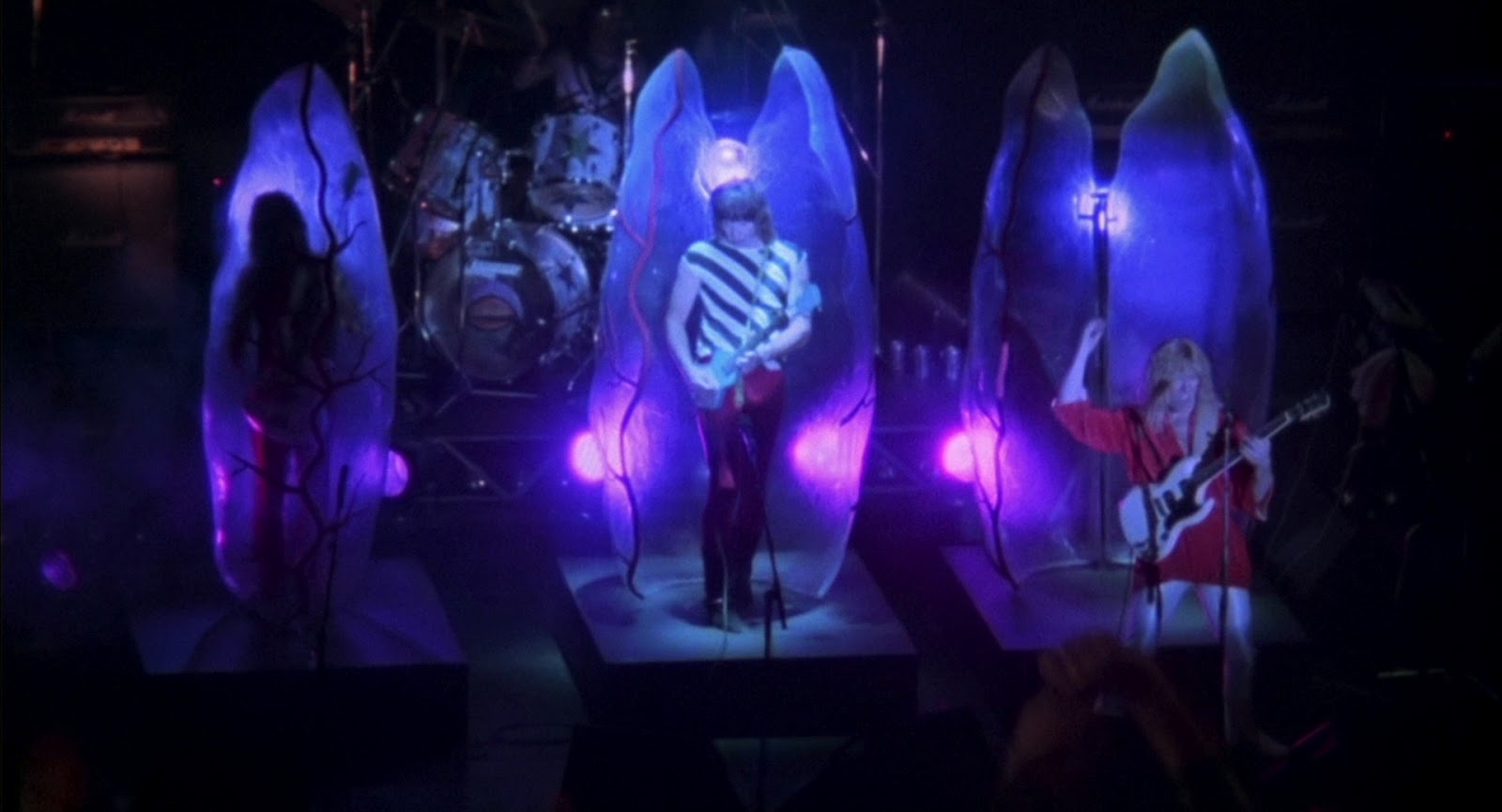
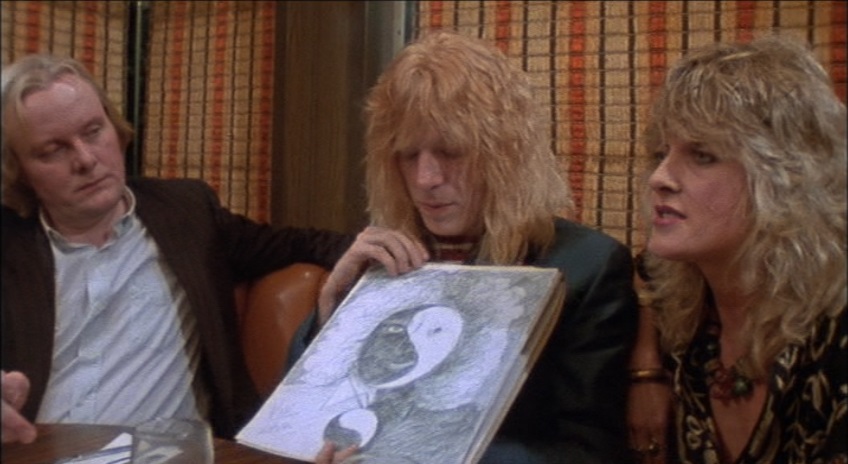









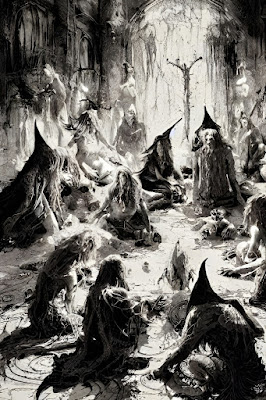
.jpg)


.jpg)

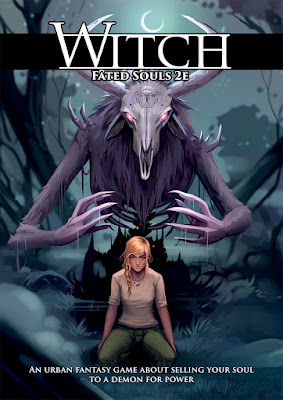
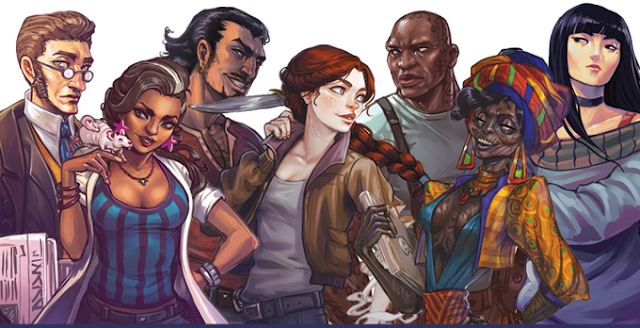



.jpg)





